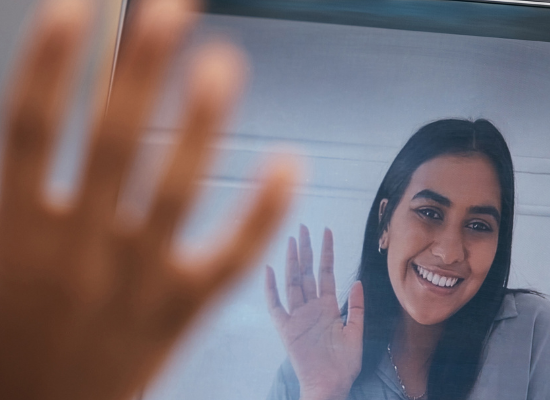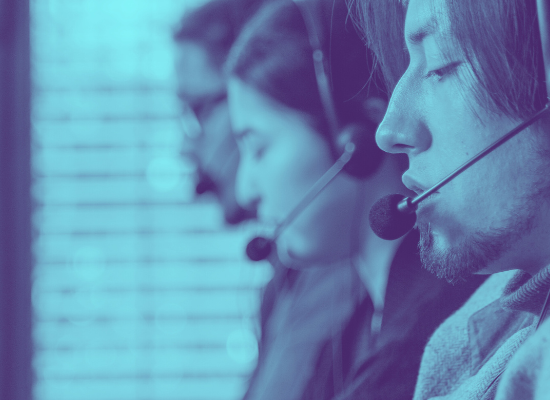
Stephanie Hepburn is a writer in New Orleans. She is the editor in chief of #CrisisTalk. You can reach her at .
“With 988 coming, we knew we needed to find a better way to promote our 24/7 helpline,” said Adrienne Breidenstine, vice president of policy and communications at Behavioral Health System Baltimore.
Locally, the National Suicide Prevention Lifeline (now called 988 Suicide & Crisis Lifeline) was called the “Here2Help Hotline.” However, community feedback has shifted how they promote the line. “People didn’t like that it was called a hotline,” said Breidenstine. Her advice to other communities: “Don’t call it a hotline, call it a helpline, because people want immediate relief and the word ‘help’ indicates that.”
Many respondents also disliked the word “crisis,” potentially excluding people who believe their needs aren’t emergent or who don’t self-identify as someone having a mental health crisis. They worried their emotional concerns weren’t “big enough” to contact the line and that “a crisis” felt “overwhelming” like “a zombie attack or 9/11.”
The language, pointed out Breidenstine, wasn’t sufficiently inclusive. Behavioral Health System Baltimore altered their approach, lowering “the stakes of engagement.”
“We needed to figure out how best to talk about 988 to the community or they weren’t going to use it.”
A year before 988 launched, Breidenstine and her colleagues dove into market research and community engagement to determine the best marketing strategy and implementation. They spent roughly $250,000, funded by the Greater Baltimore Regional Integrated Crisis System Partnership “GBRICS” grant.
Behavioral Health System Baltimore hired Marketing for Change, a research and creative agency. Over nine months, the agency surveyed thousands of people in Central Maryland — Baltimore City, Baltimore County, Carroll County and Howard County. The survey focused on what people thought of the Here2Help Hotline, whether they would use the service and what would make them want to.
Behavioral Health System Baltimore conducted smaller focus groups and spoke to experts across the region. “That included providers, city agencies, community members and people who already use the helpline,” said Breidenstine.
She and her colleagues also organized 27 community sessions with their staff support throughout Central Maryland to get their input on 988 and the overall crisis system.
Since December 2021, Marketing for Change has surveyed over 2,000 residents ages 13 to 89 and conducted 141 interviews — either in-depth interviews or within focus groups. The agency published its findings in a recently released report.
Mental health stigma, said Breidenstine, continues to be a barrier to people seeking help.
Inclusive language with phrases like “everyone needs help sometimes” and tangible, everyday wording about mental health concerns, such as “feeling down,” “anxiety” and “grieving” helped make the line more accessible. Respondents also preferred the language “emotional support” instead of “mental health support.”
Confidentiality was also a source of concern for respondents and a barrier to seeking help. They feared 988 conversations would be shared with friends, family, schools or employers, making it essential that 988 counselors ensure calls remain private.
Historically, the line has called counselors “trained counselors.” Respondents perceived that “trained” meant the counselors had less training, not more. “We had added it to emphasize the counselors’ specialized expertise but people thought that meant limited training when they’re actually all seasoned licensed counselors.”
The survey and interviews aimed to get vital feedback and build trust with the community. “We wanted to create a brand and promotional package of tools and resources that the community bought into,” said Breidenstine.
“If they don’t buy into it, they won’t use it.”
The market research has not only highlighted what aspects are essential to change to increase accessibility but also what to keep, said Liselle Yorke, director of communications at Behavioral Health System Baltimore. “We kept our colors — purple and orange — because they’re familiar to people who’ve used the line, and in Baltimore, we connect with purple because of the Ravens.”
They also kept the helpline’s tagline: “We’re here to help.” “People liked it, and it drew the connection to the previous brand and our current marketing,” added Bridenstine.
The survey and interview data revealed that there’s more research needed, especially for targeted campaigns for people with substance use challenges. “We found that there’s greater stigma among adults, youth and caregivers around substance use than mental health,” said Yorke, “so we are researching better ways to reach them.”
Incorporating the feedback they received, Behavioral Health System Baltimore developed a 988 website that provides information on what to expect if you contact 988, coping tips, and an online directory of same-day or nearly same-day clinics. “It serves as a hub of resources,” said Yorke.
The Greater Baltimore Regional Integrated Crisis System Partnership “GBRICS” grant funds the ongoing research and 988 marketing. “We built market research and robust campaigns into the grant,” said Breidenstine. The grant includes close to $1 million yearly for paid marketing.
The grant also includes funds for community engagement, including the 988 ambassadors program. Around 50 ambassadors are paid a stipend to promote 988 within their community using grass-roots activism. “We recognize people know their communities better than we do, and we need to partner with and pay them for their time and expertise,” said Breidenstine.
The ambassadors have been tremendous advocates, said Yorke, highlighting gaps and additional community needs. “They’ve added a real richness to what we’re doing,” she said. “Ms. [Betsy] Simon is a huge advocate for older adults — she’s been the voice in our ear saying, ‘You have to ensure your outreach is appropriate for older adults.” Ms. Marguerite [Woods], who is blind, similarly advocates for the blind community, pressing to ensure adequate engagement. “They’ve been invaluable because they’re making sure we don’t miss folks.”
The new CALL 988 campaign has incorporated respondent feedback in its new “When can I call 988?” commercial. The brief — 15 seconds — uses accessible language, highlighting that it doesn’t have to be an emergency for people to reach out to 988. “We serve people who just want to talk sometimes,” says the voiceover. It also gives an example of a caller who had a “really tough day” and needs to process it with someone.
The line’s social media campaigns also highlight lower stakes of engagement, noting that whether someone is dealing with a breakup, a family argument or a bad day, the line is there to help with that, too.
“The campaigns are on TikTok, Snapchat, Facebook, Instagram, YouTube — we’ve also done television, radio spots and special marketing packages at Ravens and Orioles games,” said Yorke. “It’s multi-prong.”
Behavioral Health System Baltimore has placed 988 billboards in zip codes where they’re getting the largest number of 911 calls for behavioral health needs.
The line’s 988 marketing started as general awareness focused, but Yorke and Breidenstine have since tailored the campaigns to specific populations. “It’s really about reaching people where they are, so we have campaigns focused on youth, men 45-plus with a subset of veterans, the LGBTQ community, and those in an emergency or pre-emergency,” said Yorke. The latter focuses on people who need to speak to someone immediately. “They need emotional support or aren’t at the cliff’s edge but are having a bad day.”
The idea, said Yorke and Breidenstine, is that 988 is for everyone.










